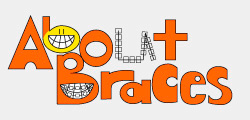The three main features of the transverse characteristics of the smile are arch form, buccal corridor width and transverse can of the maxillary occlusal plane.
The buccal corridor width is the negative space between the buccal surface of the maxillary first premolar and the inner point at which the lips join when the patient smiles. It is often stated as a ratio of the inner lip commissure width divided by the distance between the first maxillary premolars.
The arch form is a significant aspect of the transverse dimension of the smile. A narrow arch form is aesthetically less appealing. The expansion and widening of a narrow arch form can improve the appearance of smile significantly by decreasing the size of the buccal dimension. However, the orthodontist must be very careful because excessive expansion may lead to the elimination of the buccal corridor. Prosthodontists stress that this is not appealing because it is unrealistic-looking and denture-like, which is a sign of poorly constructed denture. Second, when the anterior sweep of the maxillary arch is broadened, flattening of the smile arc may occur. The orthodontist must make a judgement as to what trade-offs are acceptable to get an ideal smile.
A transverse cant can be caused by differential eruption of the maxillary anterior teeth or a skeletal asymmetry of the mandible. This relationship of the maxilla to the smile cannot be seen on intraoral images or study models, and facial photographs are also not that accurate. Therefore, clinical examination and digital video documentation are essential to determine this characteristic.


